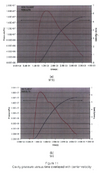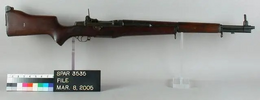jmorris
Member
- Joined
- Sep 30, 2005
- Messages
- 24,343
Is it peculiar to the AR platform? And for what reason?
Never heard of it in any other platform,…
No, it happens with many firearms. Very common with blow backs.
Is it peculiar to the AR platform? And for what reason?
Never heard of it in any other platform,…
Completely false. The bullet is long gone by the time any of that happens.One reason is that the inline system makes the AR the most accurate semiautomatic centerfire rifle in use.
The bullet is long gone by the time any of that happens.
No. That's not how physics works. At all.Rather, in fact, it is THIS statement which is “completely false.”
The carrier starts moving as soon as the rear edge of the bearing surface clears the rear edge of the gas port. That’s how physics works.
You must have missed the video. You misunderstand how it works among other things. Recoil is immediate. The inline system means that the stock is not a pivot point as it is on other rifles. The muzzle does not immediately climb like other rifles. Also the M-16 was very accurate from the beginning. I qualified expert easily in 1969. Scopes have nothing to do with the inherent accuracy of the M-16. Your comments about gobs of money and tooling spent solely to make them accurate is also false. Gobs of money possibly were spent because the military wanted other versions for other purposes than it was designed for.Completely false. The bullet is long gone by the time any of that happens.
The AR got accurate because gobs of money were spent over the years to make them accurate and proliferate the tooling to do so. In addition to even more money spent on accurate ammunition.
Basicly nobody scoped ARs for accuracy in the 1980s. The Mini-14 was what you bought if you wanted a scoped 223 autoloader back then.
Well, where else was he going to put the spring?Maybe Stoner somewhat copied the concept used by Vorgrimmler in Spain, used in the CETME, then H&K G3 etc.

Again you miss the point. Recoil and weapon movement is not caused by the bolt. The statement that nothing happens until the bullet passes the gas port is wrong regarding recoil.Hmmmm. Varminterror, I liked your first explanation better; nothing happens 'till the bullet passes the gas port. I concur that the gas doesn't arrive in the carrier key instantly, but the lag is so slight as to be imperceptible.
Straight blowbacks are a little more complicated; there is an equal and opposite action, but the bolt, being much heavier, really doesn't move (much) until the bullet is gone.
The AR platforms straight line design does change its reaction to recoil. It wasn't altogether a new idea, but it has certainly prospered. Stoner was thinking outside the box as regards layout and materials.
Moon
The statement that nothing happens until the bullet passes the gas port is wrong regarding recoil.
The carrier starts moving as soon as the rear edge of the bearing surface clears the rear edge of the gas port.
I agree I think. I hope you don't think that I made a false claim.There was no claim that recoil did not start until the gas system is pressurized - it’s the internet, you can’t fabricate delusions to try to move the goal post after you’ve failed to support a false claim.
Actually, there is a delay of about 1/4 milliseconds for the gas pressure to fill the gas tube, and begin pressurizing the carrier cavity.The carrier starts moving as soon as the rear edge of the bearing surface clears the rear edge of the gas port.

That depends on the design of the stock . . .A normal stock is offset below the recoil force causing muzzle rise as the butt is a pivot point.


Now there is a mixture. Bolt movement and recoil are two separate events. The gun is imparted recoil as soon as the cartridge ignites, but the actual movement of the gun takes a lot longer, and is much slower. Semi-autos, with a locked breech, are as secure as a bolt action at the moment of ignition. The semi-auto operation does dissipate recoil, by spreading it out.Again you miss the point. Recoil and weapon movement is not caused by the bolt. The statement that nothing happens until the bullet passes the gas port is wrong regarding recoil.
I am wondering how you came up with that. If that were the case bolt action rifles would not recoil at all.
